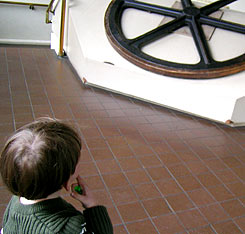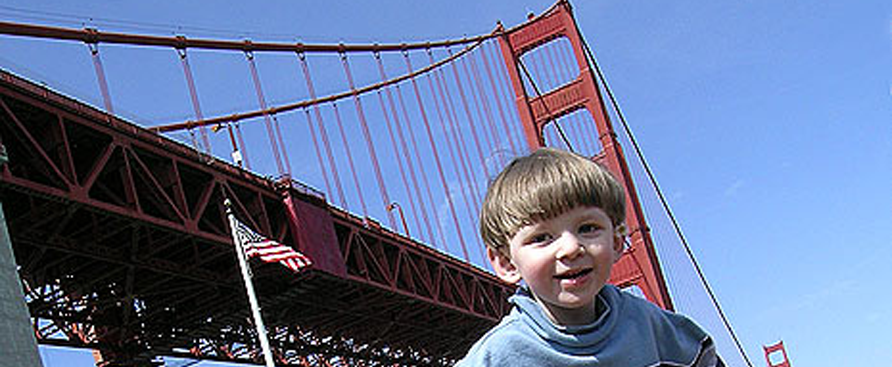
Around the time we got sick of San Francisco’s hills, we took it upon ourselves to hop a trolley for a quick spree up the hill, but it got me to thinking about history. Well, okay, not really, but the question was forced on me like the question of which hand is my dominant one, but the reward in this matter is even greater than that, so we went to the Cable Car Museum to get all our answers.
One thing that’s obvious is that, whether in days of the now or years of the yester, nobody in their right mind wants to walk up and down the hills all day just to get where they’re going. That’s why there’s the whole cable car business in the first place.
So thanks for pointing out the obvious, that people don’t want to walk up and down hills. Now let’s go on to the meat of these potatoes… Mmmm, meat and potatoes, that sounds pretty good right now. Got any gravy? Wait, no, never mind, I’m off track here.
Here’s just a few of the things I already knew about trolleys before going to San Francisco, and all of this is as true as it feels in the truthiness of my heart. Cable cars, aka trolley cars, of San Francisco have been around since 820 BC, and are not only the first known use of cabled actuation, but also the first known use of the wheel in the western hemisphere. Cable cars are also credited with the invention of lightning, milk and the writing of the constitution.
Of course, having been to the cable car museum, I learned a few new things about them, not the least of which is that everything I said about them in the previous paragraph is completely untrue. It’s odd how these urban legends spread. I was just sure Elvis was born on a San Fran cable car, but I guess I was wrong.
What I learned at the museum is that San Francisco has the world’s only remaining cable car system, that the trolleys have no independent motors, and that they’re all powered centrally by an undisclosed number of, presumably, miles of steel cables that run beneath the city streets.
I also learned that passengers are allowed to hang off the sides of them, even whilst in transit, so long as they pay their fare.
But the biggest thing that’s kept these trolleys running all this time, and feel free to say it with me, is — no, not steam, not coal, nor Rice-a-Roni or the most prevalent myth, love — rather, it’s a shared distaste for walking up steep hills.
One could easily argue that this town has everything, but what’s more interesting than that, is that it has the one thing. No where else in the world will you find a labyrinth of steel cables forever slithering beneath city streets to pull trains along. For that alone you should take a visit, take a gander, take a stroll, and take a rolling ride on one or more of the city’s many, steep and winding cable cars.
We did, though with all the difficulty you can imagine from having all us ‘fraidy kitty catty’s in tow, and it was an experience I’ll never forgot… well, at least not until tomorrow. Good thing I always carry photojournalists with me, huh?
The Cable Car Museum is located at 1201 Mason Street and is open from 10 a.m. to 5 p.m. 361 days out of the year. Admission is always free, so bring as much film for your camera as you do attention span.

Above – Part museum, part gift shop, part functional cable house, the Cable Car museum is not only free to the public, but strangely, peculiarly, interestingly open to the public.
